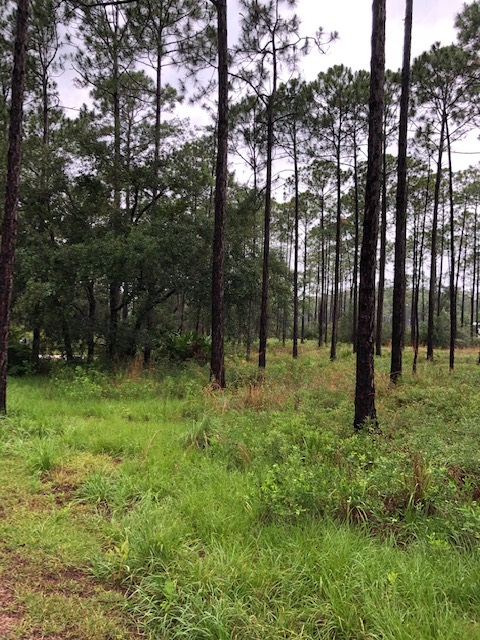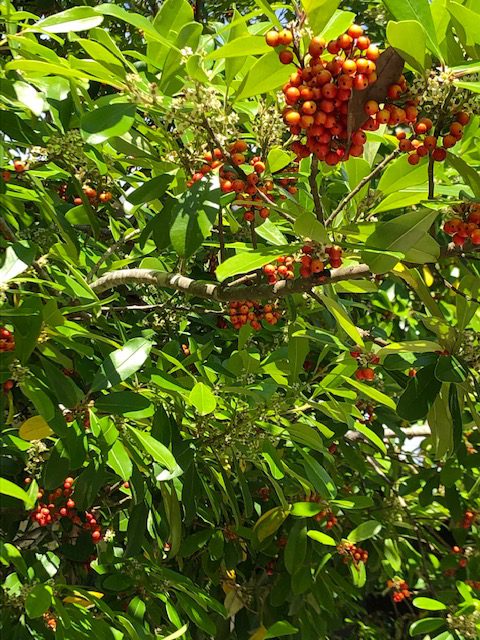Do you have a management plan for your pine plantation?
If not, the benefits of wildlife are definitely worth considering as you plan. Benefits from wildlife can include better hunting, hiking, bird watching and photography opportunities. In some scenarios, wildlife can help lead to additional income through hunting leases or other similar ventures.
If you have an interest in mixing timber production and wildlife habitat management, a complete forestry management plan will be needed to accomplish your objectives. The specific objectives associated with managing for both timber production and wildlife habitat improvement can be complex and should be clearly defined in your forestry management plan. Developing a forestry management plan is somewhat similar to the process of community planning and development that goes on in towns and cities: Where do roads and trails go? What kind of growth/development are encouraged in specific areas? What existing growth needs to be suppressed or removed?, etc. In a forestry setting we are answering those questions as they relate to factors like plant species, wetland delineation, soil types, etc., not business, residential, and historic areas.
Before any of these objectives can be planned and initiated you must first know your land and acknowledge its strengths, and more importantly, its limitations. This includes consideration of:
- Soil type (heavy clays, poorly drained flatwoods, high organic matter, deep sandy soils, well drained loams, etc)
- Water sources (wetland areas, ponds, creeks, springs, etc.)
- Topography
- Location of your property (proximity to homes, major highways, and significant natural resources)
All of these scenarios present opportunities and limitations. Forming objectives around what your property is best suited to greatly increases the likelihood of success while acknowledging limitations helps prevent failure and unintended consequences. For example, if your property is adjacent to a major highway, managing habitat to promote bobwhite quail or turkey may not be ideal. The propensity for running along the ground and low flight trajectory of these birds makes collisions with automobiles a significant concern.
If you consider timber production as your primary objective, it should be recognized during the planning phase that effective wildlife habitat management will reduce potential timber production. Leaving areas unplanted in order to provide spaces for food plots and utilizing planting densities low enough to allow sunlight to the forest floor (for increased forb production) will benefit a wide variety of wildlife but ultimately reduce total amount of timber available for harvest.
Identifying the types of wildlife that will be encouraged to establish in your pine plantation is another key part of the planning process. Depending on the limitations mentioned above and timber production goals, it may not be possible to attract all desired species to your plantation. Personally, I enjoy watching hawks, owls, and eagles in flight above the pine forest. For this group of wildlife to thrive an adequate food source must be available, and the canopy must be open enough for the birds to hunt effectively. A low basal area and frequent burning are required to attract these birds of prey, as these management strategies promote the rodents and other small wildlife on which they feed. Bobwhite quail also prefer these more open conditions. Alternatively, denser pine canopies are acceptable for deer habitat. Take some time to consider you options and priorities as you make these important decisions.
There are many management strategies that can be employed to help make your pine plantation more attractive to wildlife. Think about the multiple levels of canopy in given areas of the forest that may include high pine canopy with periodic oaks for mast production at the next level down, or even native hollies for birds at the next level down. Creating vertical plant levels provides many plants types to help attract a variety of wildlife. Promoting shrubs, particularly around wetland areas, can benefit bird populations. The shrubs are utilized for protection from predators and nesting. When thinning pine plantings, around year 12 to 15, consider places to create mini-windrows for wildlife cover and opening areas for food plots.
In addition to income from timber sales, a well planned and managed forest can provide years of enjoyment for you and your family. Set aside time to do your research and determine your priorities, then talk with your Extension agent, county forester, and/or a qualified consulting forester. They will be able to work through several different scenarios that best fit your objectives for your pine plantation. Good luck and enjoy the adventure.
- Land Management to Enhance Wild Turkey in the Panhandle - September 29, 2023
- Healthy Forest Management - April 14, 2023
- Benefits of a Forestry Consultant - October 7, 2022


